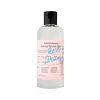What's inside
What's inside
 Key Ingredients
Key Ingredients

 Benefits
Benefits

 Ingredients Side-by-side
Ingredients Side-by-side

Water
Skin ConditioningButylene Glycol
HumectantGlycerin
HumectantNiacinamide
Smoothing1,2-Hexanediol
Skin ConditioningCentella Asiatica Leaf Extract
Skin ConditioningTrehalose
HumectantAllantoin
Skin ConditioningSh-Oligopeptide-23 Sp
Skin ConditioningMadecassoside
AntioxidantAsiaticoside
AntioxidantMadecassic Acid
Skin ConditioningAsiatic Acid
Skin ConditioningPancratium Maritimum Extract
BleachingSodium Hyaluronate
HumectantHydrolyzed Hyaluronic Acid
HumectantHydrolyzed Sodium Hyaluronate
Skin ConditioningHyaluronic Acid
HumectantHydroxypropyltrimonium Hyaluronate
Potassium Hyaluronate
Skin ConditioningPentylene Glycol
Skin ConditioningSodium Hyaluronate Crosspolymer
HumectantSodium Acetylated Hyaluronate
HumectantCeramide NP
Skin ConditioningMacadamia Ternifolia Seed Oil
EmollientCaprylic/Capric Triglyceride
MaskingCholesterol
EmollientBrassica Campestris Sterols
EmollientHydrogenated Lecithin
EmulsifyingPanthenol
Skin ConditioningDipotassium Glycyrrhizate
HumectantIllicium Verum Fruit Extract
PerfumingAdenosine
Skin ConditioningCellulose Gum
Emulsion StabilisingXanthan Gum
EmulsifyingInulin
Skin ConditioningCellulose
AbsorbentGlucose
HumectantFructose
HumectantHydroxyethyl Acrylate/Sodium Acryloyldimethyl Taurate Copolymer
Emulsion StabilisingCitric Acid
BufferingHydroxyacetophenone
AntioxidantEthylhexylglycerin
Skin ConditioningCaprylyl Glycol
EmollientDisodium EDTA
Water, Butylene Glycol, Glycerin, Niacinamide, 1,2-Hexanediol, Centella Asiatica Leaf Extract, Trehalose, Allantoin, Sh-Oligopeptide-23 Sp, Madecassoside, Asiaticoside, Madecassic Acid, Asiatic Acid, Pancratium Maritimum Extract, Sodium Hyaluronate, Hydrolyzed Hyaluronic Acid, Hydrolyzed Sodium Hyaluronate, Hyaluronic Acid, Hydroxypropyltrimonium Hyaluronate, Potassium Hyaluronate, Pentylene Glycol, Sodium Hyaluronate Crosspolymer, Sodium Acetylated Hyaluronate, Ceramide NP, Macadamia Ternifolia Seed Oil, Caprylic/Capric Triglyceride, Cholesterol, Brassica Campestris Sterols, Hydrogenated Lecithin, Panthenol, Dipotassium Glycyrrhizate, Illicium Verum Fruit Extract, Adenosine, Cellulose Gum, Xanthan Gum, Inulin, Cellulose, Glucose, Fructose, Hydroxyethyl Acrylate/Sodium Acryloyldimethyl Taurate Copolymer, Citric Acid, Hydroxyacetophenone, Ethylhexylglycerin, Caprylyl Glycol, Disodium EDTA
Water
Skin ConditioningButylene Glycol
HumectantGlycerin
HumectantLimnanthes Alba Seed Oil
Skin Conditioning1,2-Hexanediol
Skin ConditioningPolyglyceryl-10 Stearate
Skin ConditioningGlyceryl Stearate Citrate
EmollientSodium Stearoyl Glutamate
CleansingInulin Lauryl Carbamate
Emulsion StabilisingGlyceryl Caprylate
EmollientEthylhexylglycerin
Skin ConditioningPropanediol
SolventDisodium EDTA
Camellia Sinensis Leaf Extract
AntimicrobialTocopherol
Antioxidant
 Reviews
Reviews

Ingredients Explained
These ingredients are found in both products.
Ingredients higher up in an ingredient list are typically present in a larger amount.
1,2-Hexanediol is a synthetic liquid and another multi-functional powerhouse.
It is a:
- Humectant, drawing moisture into the skin
- Emollient, helping to soften skin
- Solvent, dispersing and stabilizing formulas
- Preservative booster, enhancing the antimicrobial activity of other preservatives
Butylene Glycol (or BG) is used within cosmetic products for a few different reasons:
Overall, Butylene Glycol is a safe and well-rounded ingredient that works well with other ingredients.
Though this ingredient works well with most skin types, some people with sensitive skin may experience a reaction such as allergic rashes, closed comedones, or itchiness.
Learn more about Butylene GlycolDisodium EDTA plays a role in making products more stable by aiding other preservatives.
It is a chelating agent, meaning it neutralizes metal ions that may be found in a product.
Disodium EDTA is a salt of edetic acid and is found to be safe in cosmetic ingredients.
Learn more about Disodium EDTAEthylhexylglycerin (we can't pronounce this either) is commonly used as a preservative and skin softener. It is derived from glyceryl.
You might see Ethylhexylglycerin often paired with other preservatives such as phenoxyethanol. Ethylhexylglycerin has been found to increase the effectiveness of these other preservatives.
Glycerin is already naturally found in your skin. It helps moisturize and protect your skin.
A study from 2016 found glycerin to be more effective as a humectant than AHAs and hyaluronic acid.
As a humectant, it helps the skin stay hydrated by pulling moisture to your skin. The low molecular weight of glycerin allows it to pull moisture into the deeper layers of your skin.
Hydrated skin improves your skin barrier; Your skin barrier helps protect against irritants and bacteria.
Glycerin has also been found to have antimicrobial and antiviral properties. Due to these properties, glycerin is often used in wound and burn treatments.
In cosmetics, glycerin is usually derived from plants such as soybean or palm. However, it can also be sourced from animals, such as tallow or animal fat.
This ingredient is organic, colorless, odorless, and non-toxic.
Glycerin is the name for this ingredient in American English. British English uses Glycerol/Glycerine.
Learn more about GlycerinWater. It's the most common cosmetic ingredient of all. You'll usually see it at the top of ingredient lists, meaning that it makes up the largest part of the product.
So why is it so popular? Water most often acts as a solvent - this means that it helps dissolve other ingredients into the formulation.
You'll also recognize water as that liquid we all need to stay alive. If you see this, drink a glass of water. Stay hydrated!
Learn more about Water